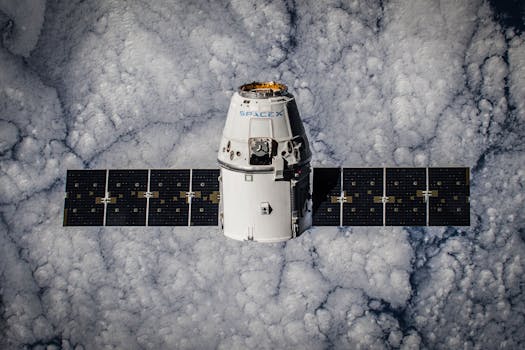
satellite technology has revolutionized the way we communicate, navigate, and understand our planet. Beyond the atmosphere, the future of satellite technology is poised to transform the landscape of surveillance and connectivity. With the increasing demand for high-speed data transmission, secure communication networks, and precise surveillance systems, satellite technology is becoming an essential component of modern infrastructure.
One of the key drivers of the satellite technology industry is the advancement in launch systems. Reusable rockets, such as those developed by SpaceX and Blue Origin, have significantly reduced the cost of access to space. This has enabled the deployment of constellations of small satellites in low Earth orbit, which can provide high-resolution imaging, communication services, and navigation data. The development of new launch systems, such as the Ariane 6 and the Vulcan Centaur, will further increase the efficiency and affordability of satellite launches.
The design of satellites is also undergoing a significant transformation. Traditional satellites are being replaced by smaller, more agile, and highly capable spacecraft. These new satellites are equipped with advanced sensors, high-gain antennas, and sophisticated data processing systems. They can provide high-resolution images, detect and track targets, and transmit large amounts of data in real-time. The use of 3D printing and other advanced manufacturing techniques has also enabled the production of complex satellite components, such as antennas and propulsion systems.
Data analytics is another critical aspect of satellite technology. As the amount of data generated by satellites increases, the need for advanced data analytics and machine learning algorithms becomes more pressing. These tools enable the extraction of insights and patterns from large datasets, which can be used to improve surveillance and connectivity services. For example, data analytics can be used to track the movement of ships, monitor crop health, and detect natural disasters. The development of cloud-based data platforms and edge computing has also enabled the processing and analysis of satellite data in real-time.
The application of satellite technology for surveillance and connectivity is vast and diverse. In the military sector, satellites are used for intelligence gathering, communications, and navigation. They provide critical support for military operations, enabling the coordination of troops, the tracking of enemy movements, and the transmission of secure communications. In the commercial sector, satellites are used for remote sensing, communication services, and navigation. They provide critical infrastructure for industries such as agriculture, finance, and transportation.
In conclusion, the future of satellite technology holds great promise for surveillance and connectivity. With advancements in launch systems, satellite design, and data analytics, the industry is poised to transform the landscape of modern infrastructure. As the demand for high-speed data transmission, secure communication networks, and precise surveillance systems continues to grow, satellite technology will play an increasingly important role in meeting these needs.